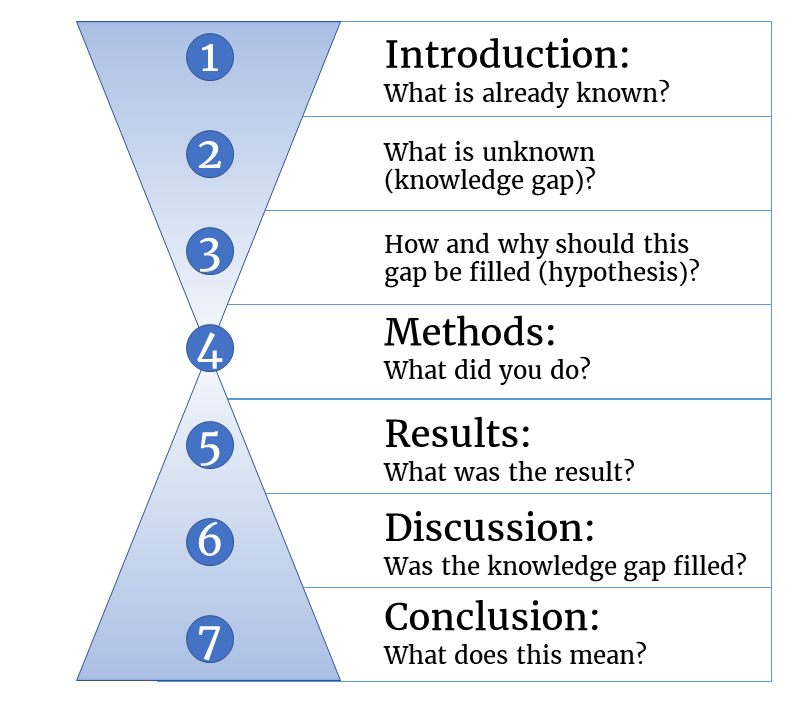Structure of a scientific text
Learning outcomes
At the end of this chapter you will be able to:
- Correctly structure a scientific text according to the IMRAD method
- Know where and when to incorporate figures in your text
- Write figure captions
- Structure your paragraphs according to the conventions of scientific writing
(Scientific) texts generally consist of an introduction, main body of text (methods, results, and discussion in research papers) and conclusion2. This structure tends to follow the chronological order of the research process. However, the results and discussion sections often break with this, since it may be useful to mention the most important aspects there first2.
Often, scientific texts are built up according to an hourglass structure. This structure is common, as it offers a clear narrative that will help readers to focus and to understand the importance of the research presented. The hourglass generally starts by setting a broad framework establishing the relevant knowledge already available in the field (1). Here, it is important to grab the attention of your audience by creating ‘tension’ and highlighting a controversy in published results, for example. The hourglass will continue to narrow down to the unknowns (2), the measures that can be taken to decrease this gap, and the value that such answers to open questions would have in your field (3). The text will focus on a specific research question (e.g., a case-study) (4), and then start to build out again to explain the results found in this study (5). In the discussion, the results will be placed in a broad setting again (6), and their implications may be suggested in the conclusion (7).

Fig. 1 The anatomy of a scientific paper
Each specific research area, scientific journal or magazine, may have their own preferred structure for the articles they publish. The structures suggested in this chapter are general conventions, but remember to research the style and structure used in your specific field of interest. Likely, the authors of the literature you study for your own research will be the readers of your contribution, so try to understand the way they prefer to see things structured and adapt your own style to that (See Audience for more information on difference audiences to write for).


